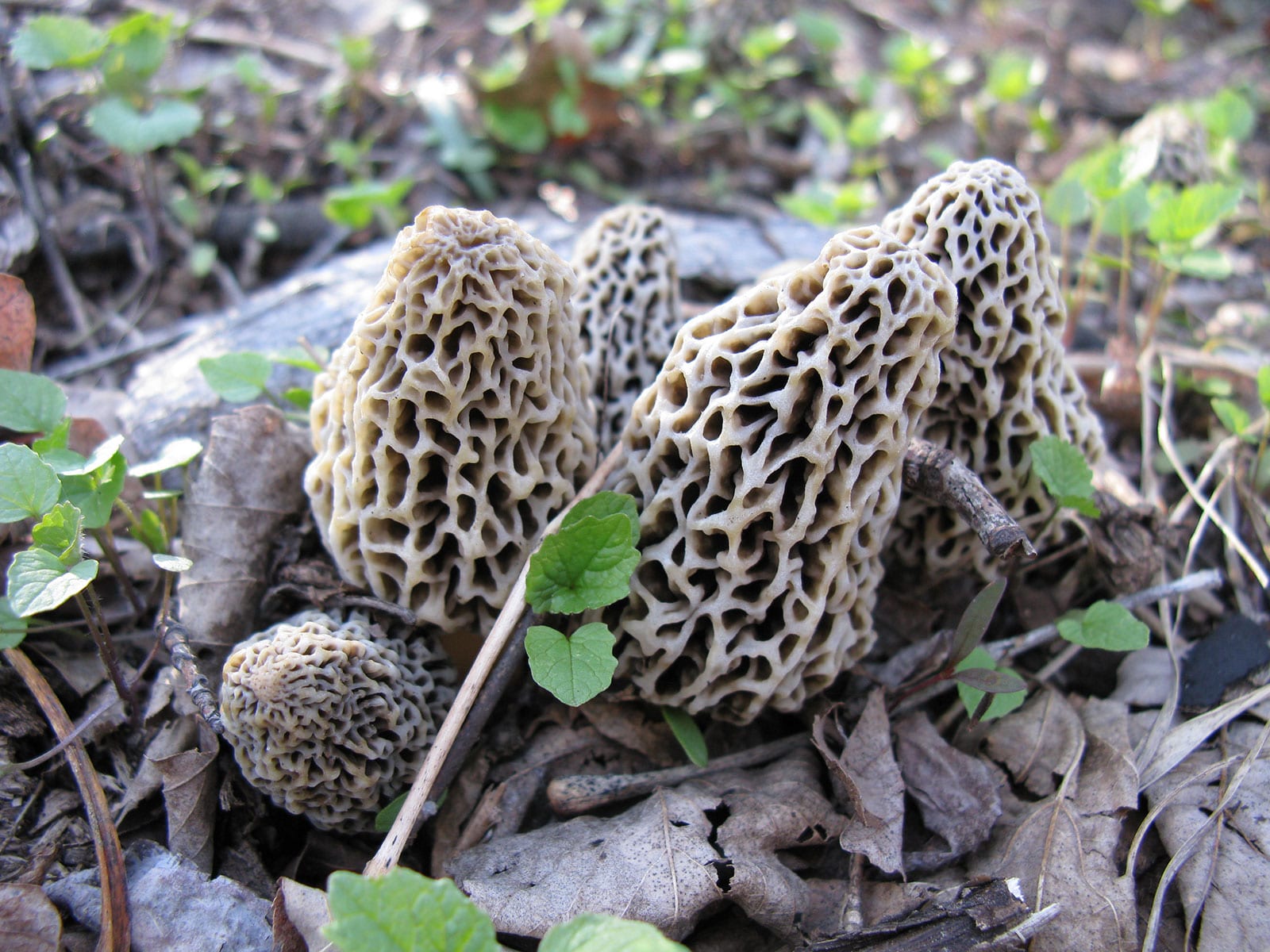Physical Address
304 North Cardinal St.
Dorchester Center, MA 02124
Physical Address
304 North Cardinal St.
Dorchester Center, MA 02124

The white morel is unique in many ways. The majority of morel mushrooms are black or yellow in color and grow under trees or in association with trees. M.rufobrunnea defies those standards with its white ridges and preference for tree-less areas. This morel was originally discovered and notated by mycologists in Mexico. Since then, it has been found in coastal California and Oregon and is likely to have a wider distribution than is currently known.
What Does a White Morel Look Like?
Like all morels, the white morel has an elongated, honeycombed cap that is covered in ridges and deep pits. The stem and cap are both hollow so when you cut it open, it is hollow from top to bottom. This hollowness is one of the main identifying characteristics of morels. The base of the cap is attached to the stem and the cap is usually longer than the stem. The stem is white or off-white or tan in color.
The coloring of the white morel is unusual among morels. It has a cone-shaped cap with vertically aligned ridges that are white or close to white. The pits are dark brown or black, causing a visual contrast that is quite noticeable. As it ages, the ridges and pits turn a yellowish-brown color. The cap ranges in size from 6-12 cm tall and 2-5 cm wide. The stem is 2-9 cm tall and 1-2.5 cm wide and can be swollen at the base, but not always.
The other main oddity of the white morel is that when it is bruised, it turns an orange or rusty brown color. This bruising occurs on both the cap and stem.
Where Can I Find White Morels?
On the west coast of North America, white morels have been documented as a common find. They do not appear to have a relationship with trees as do most morels. They also don’t limit themselves to appearing in the Spring like most morels. They can be found in Spring and Winter in areas with disturbed ground. White morels have been found along roadsides, in garden beds, in planters, around compost piles, near logging roads, and in mulch beds or other landscaped areas.
If you are in an urban area on the west coast of the US, keep an eye out for these beauties. As it turns out, a person doesn’t need to go out into the woods to find morels. Go for walks around your neighborhood and maybe you will come home with a bucketful of these delicious treats.